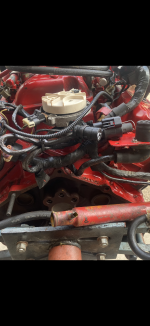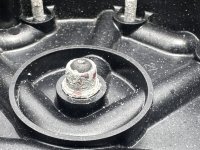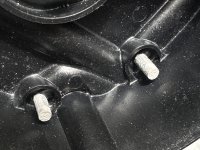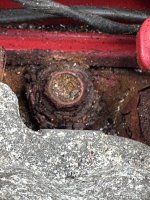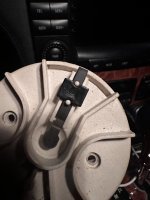MalibuMike
Petty Officer 2nd Class
- Joined
- Dec 29, 2020
- Messages
- 137
I have had a bogging issue for close to two years. It seems to happen above 3000 RPM and can be random. I have done everything to the fuel system that would be related to bogging. New fuel lines, fuel pump, running on a spare tank, removal of anti siphon valve, change filters, and fuel pressure test that are in the normal range.
On my last trip out, it bogged multiple times above 3000 RPM on the way to the Channel Islands. On the return trip I swapped out the crab style distributor cap because it is a known problem with these engines. I did not have any bogging on the return trip and ran around 3200 RPM and then pushed it up to 4000 for the last couple miles.
It’s hard for me to imagine that these caps can literally go bad in 3 to 6 months just sitting at the dry storage. And the cap does not have any kind of gasket when it sits on top of the distributor so salt air certainly gets in there and does cause some corrosion.
Does anyone have experience with these caps needing to be changed multiple times a year even if you only run your boat 10 to 20 hours a year? And if there is some corrosion, which in my mind creates resistance, what is the correlation with bogging above a certain rpm? The type of bogging i experiences is where the RPMs will slowly start dropping and even if you give it more throttle, it will be nonresponsive, and it will back itself down practically to an idle. There’s no popping or sound that would indicate a lean condition. I’m just trying to understand how, or if, a distributor above a certain rpm, can actually be attributed to this kind of bogging.
I am getting ready to replace the entire intake manifold, and I will need to pull the distributor and can inspect it for wear.
And I’m going to take a guess at one thing, but when the distributor is spinning at a higher revolutions per minute, which means somebody’s pushing on the throttle, wanting more fuel and air into the cylinders, is there something within the distributor that is telling the spark to get more powerful and if there’s corrosion there, you kind of reach a threshold of not having a good enough spark above certain RPMs?
The block is from 2007 and has approximately 700 hours on it.
On my last trip out, it bogged multiple times above 3000 RPM on the way to the Channel Islands. On the return trip I swapped out the crab style distributor cap because it is a known problem with these engines. I did not have any bogging on the return trip and ran around 3200 RPM and then pushed it up to 4000 for the last couple miles.
It’s hard for me to imagine that these caps can literally go bad in 3 to 6 months just sitting at the dry storage. And the cap does not have any kind of gasket when it sits on top of the distributor so salt air certainly gets in there and does cause some corrosion.
Does anyone have experience with these caps needing to be changed multiple times a year even if you only run your boat 10 to 20 hours a year? And if there is some corrosion, which in my mind creates resistance, what is the correlation with bogging above a certain rpm? The type of bogging i experiences is where the RPMs will slowly start dropping and even if you give it more throttle, it will be nonresponsive, and it will back itself down practically to an idle. There’s no popping or sound that would indicate a lean condition. I’m just trying to understand how, or if, a distributor above a certain rpm, can actually be attributed to this kind of bogging.
I am getting ready to replace the entire intake manifold, and I will need to pull the distributor and can inspect it for wear.
And I’m going to take a guess at one thing, but when the distributor is spinning at a higher revolutions per minute, which means somebody’s pushing on the throttle, wanting more fuel and air into the cylinders, is there something within the distributor that is telling the spark to get more powerful and if there’s corrosion there, you kind of reach a threshold of not having a good enough spark above certain RPMs?
The block is from 2007 and has approximately 700 hours on it.




















